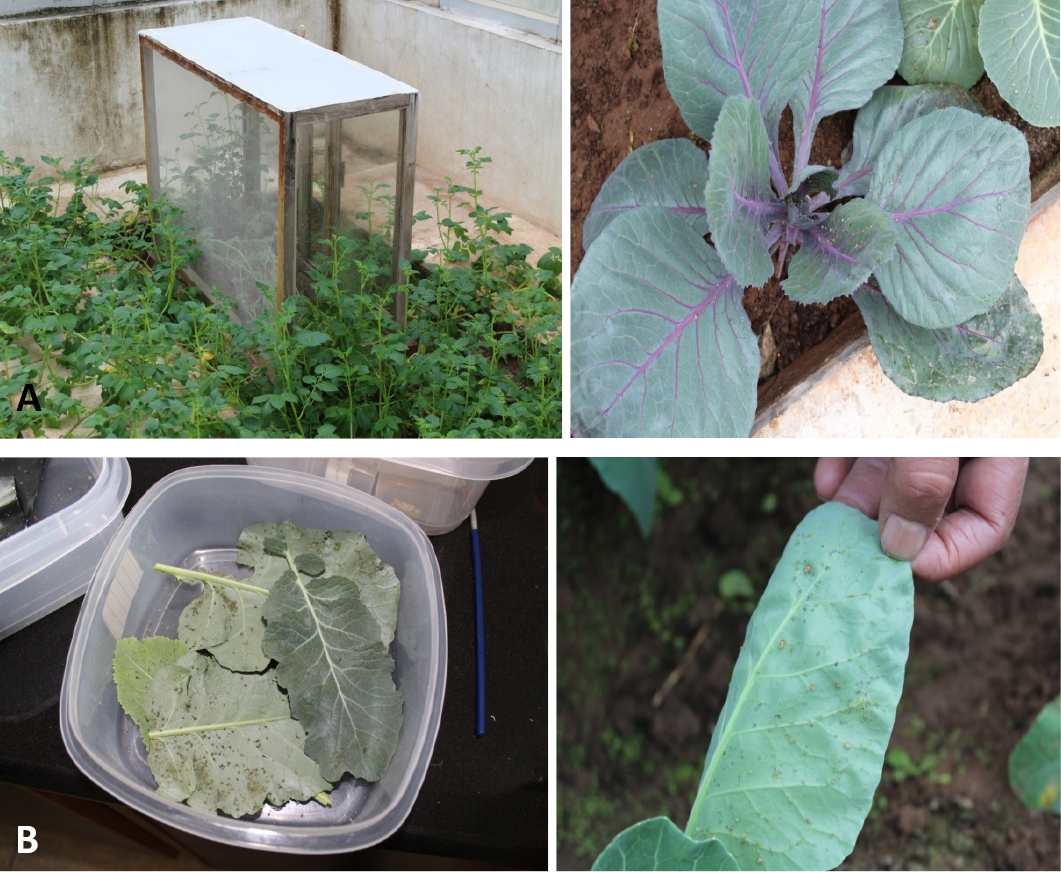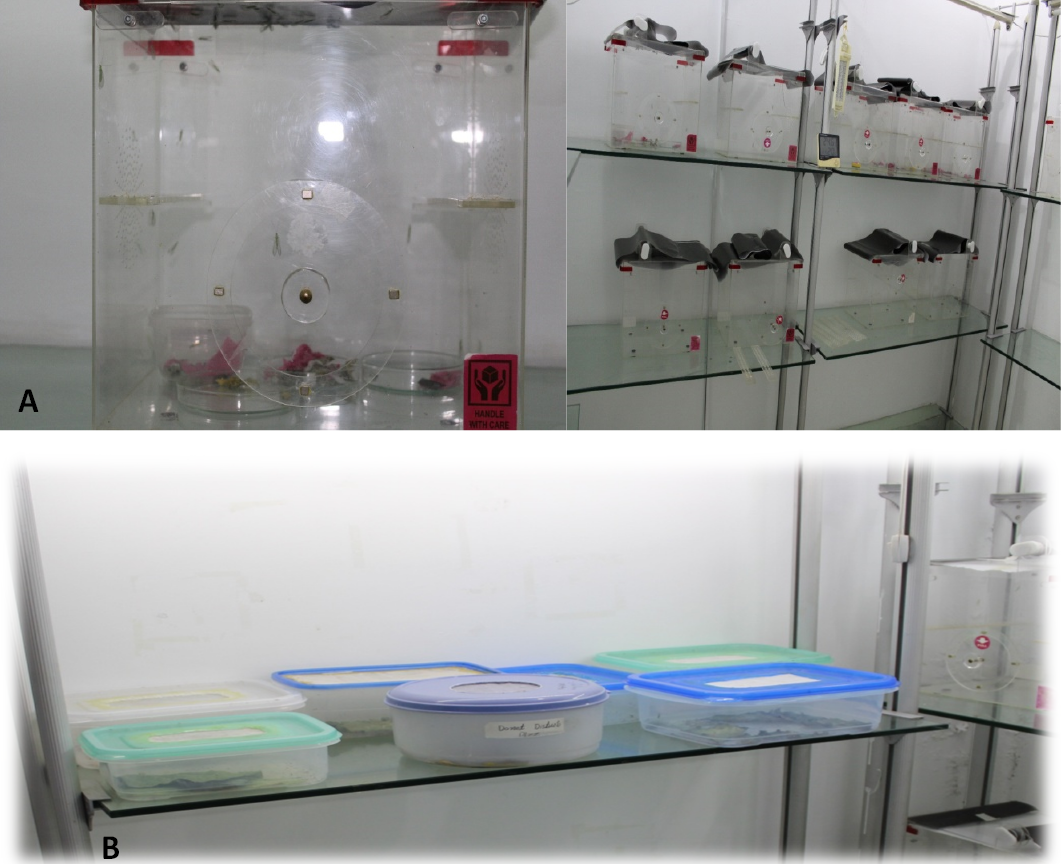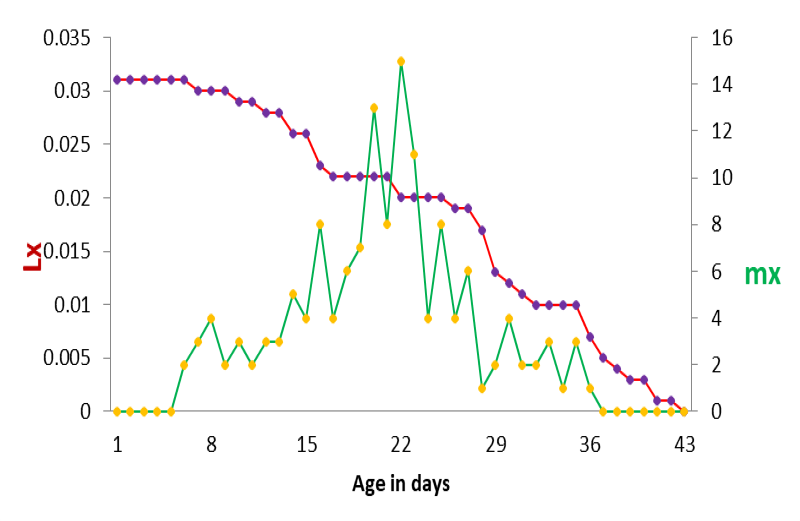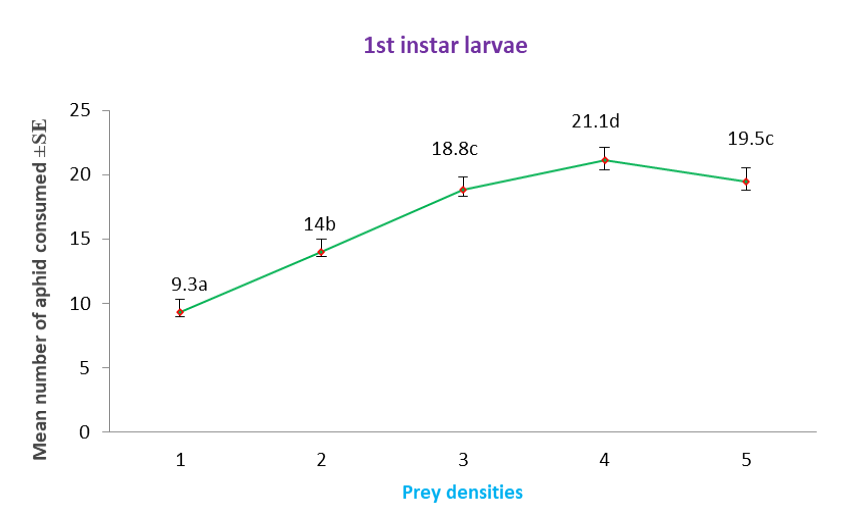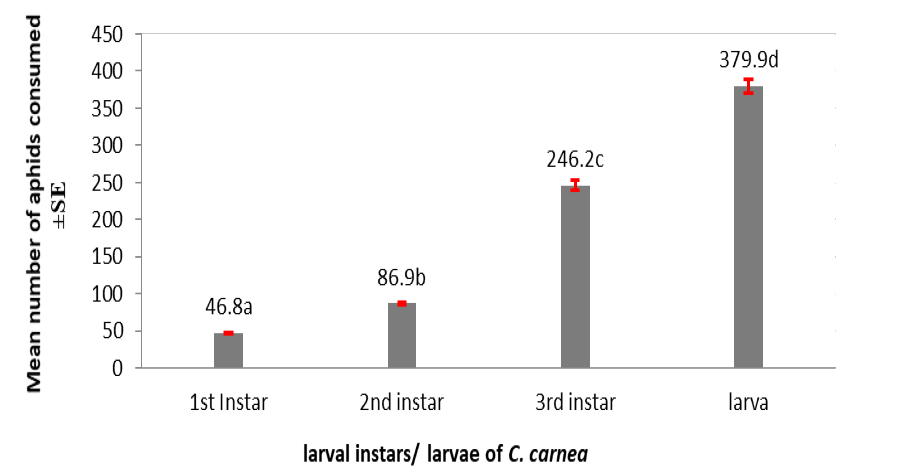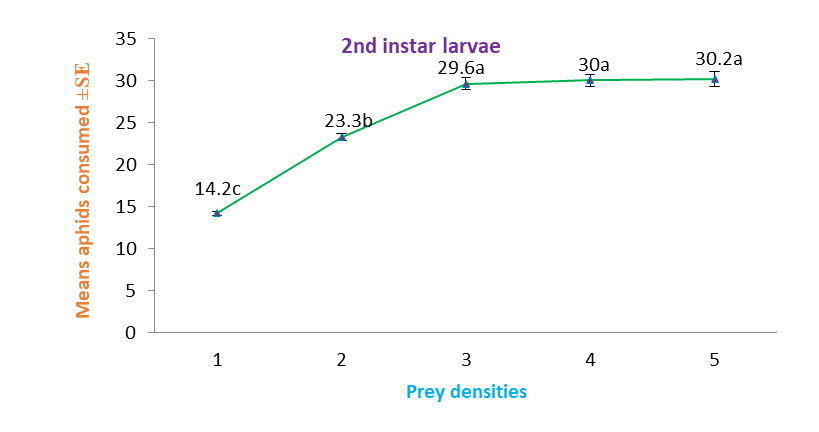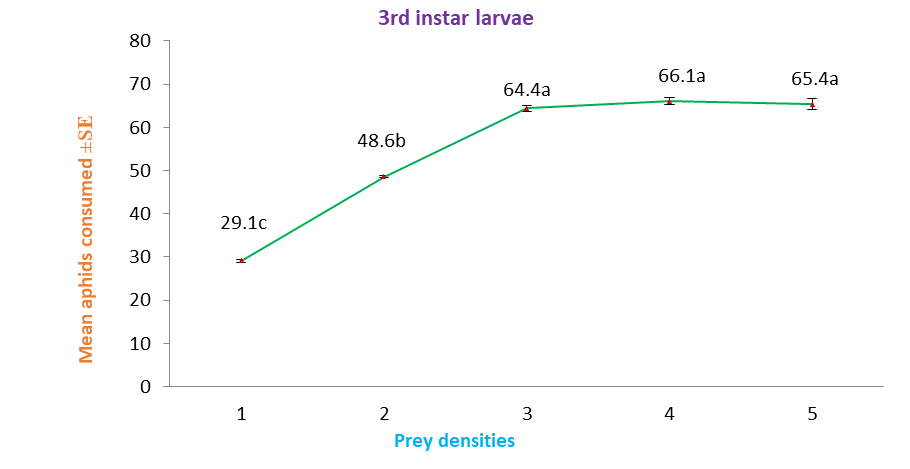Potential of Chrysoperla carnea (Stephens) (Neuroptera: Chrysopidae) Fed on Aphid, Myzus persicae (Sulzer) (Hemiptera: Aphididae) under Controlled Conditions
Potential of Chrysoperla carnea (Stephens) (Neuroptera: Chrysopidae) Fed on Aphid, Myzus persicae (Sulzer) (Hemiptera: Aphididae) under Controlled Conditions
Ahmad-Ur-Rahman Saljoqi1, Imtiaz Khan1*, Ijaz Ahmad1, Javed Khan2, Shahid Sattar1, Bashir Ahmad Khan1 and Muhammad Salim1
(A) Rearing of M. Persicae on potato and Cabbage plants under glasshouse conditions. (B) Colony maintenance of M. Persicae on infested leaves of cabbage.
(A) Culture maintenance of adult C. carnea in transparent cages under laboratory conditions. (B) Culture maintenance of C. carnea larvae in plastic containers under lab conditions.
Age specific survival (lx) and fertility (mx) of adult female C. carnea fed on M. persicae under controlled conditions.
Means followed by the same lower case letter are non-significantly different at ≤ 0.05 using LSD, test. Where 1= 10, 2=15, 3=20, 4=25 and 5=30 aphids per each density, respectively.
Mean total feeding efficiency of larval instars/larvae of C. carnea fed on mix nymphal instars of M. persicae under controlled condition.
Mean number of Myzus persicae consumed by 3rd instar larvae of C. carnea fed on five constant prey densities after 24 hours starvation. Means followed by the same lower case letter are non-significantly different at ≤ 0.05 using LSD test. Where 1= 30, 2=50, 3=70, 4=90 and 5=110 aphids per each density, respectively.





